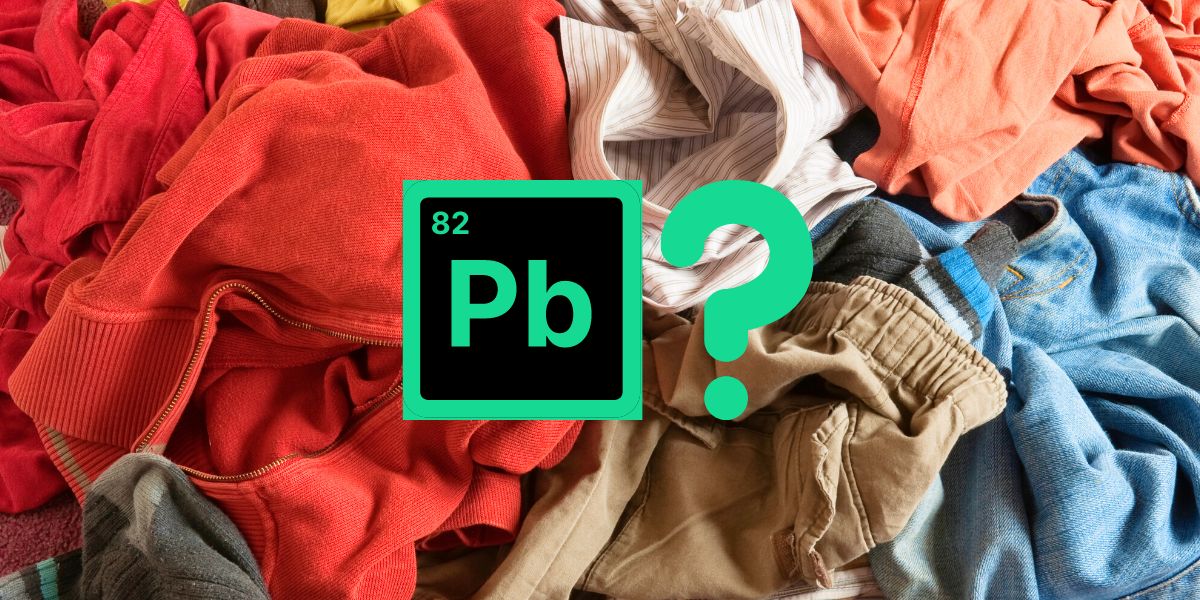Yes, if your clothes have been contaminated with lead, it’s important to clean them properly to prevent further exposure.
Dos and don’ts of washing lead out of clothes
Dos
- Do separate the clothes: Always keep lead-contaminated clothes separate from other laundry to prevent cross-contamination.
- Do pre-soak the clothes: Pre-soak the clothes in warm water for a few minutes to loosen lead particles.
- Do use warm water: Warm water helps to better remove lead particles from fabric.
- Do use a heavy-duty detergent: These types of detergents are more effective at removing lead particles.
- Do run an extra rinse cycle: This will help ensure all lead dust is removed from the clothing.
- Do dry the clothes thoroughly: Proper drying can help ensure any remaining lead particles are not transferred back onto the skin.
- Do clean your washing machine afterward: Run an empty wash cycle with hot water and detergent to clean the washing machine and remove any remaining lead dust.
Don’ts
- Don’t mix contaminated clothing with other laundry: This can spread lead particles to other clothes and increase the risk of exposure.
- Don’t use cold water: Cold water is less effective at removing lead particles.
- Don’t ignore serious contamination: If the contamination is severe, it might be safer to dispose of the clothes properly rather than trying to wash them.
- Don’t forget personal safety: If your work or activities regularly expose you to lead, consider wearing disposable coveralls over your clothing and using appropriate personal protective equipment.
- Don’t ignore symptoms of lead exposure: If you or anyone in your household is showing signs of lead poisoning (like headaches, stomach pain, trouble sleeping, or behavioral problems in children), seek medical attention immediately.
5-step guide to washing lead out of clothes
Step 1
Separate the Clothes: Keep lead-contaminated clothes separate from other laundry. This prevents cross-contamination of clean clothes. If the clothes are heavily soiled, consider shaking them outdoors to remove loose dust and particles before washing.
Step 2
Pre-Soak the Clothes: Pre-soak the lead-contaminated clothes in warm water for about 15-20 minutes. This helps loosen lead particles, making them easier to wash away.
Step 3
Wash the Clothes: Wash the contaminated clothes separately from any other clothes. Use warm water and a heavy-duty laundry detergent. Do not overload the washing machine; this ensures that the clothes have enough space to move around, which helps in the effective removal of lead.
Step 4
Extra Rinse Cycle: After the wash cycle, run an extra rinse cycle to ensure all the lead dust is removed.
Step 5
Dry and Clean: Dry the clothes thoroughly before wearing. After drying, make sure to clean your washing machine. Run an empty wash cycle with hot water and detergent to clean the machine and remove any remaining lead dust.
Remember, if the lead contamination is severe, it might be safer to dispose of the clothes properly rather than trying to wash them. This guide is meant for minimal exposure situations. For any work or activities that expose you to higher levels of lead, always consult with an environmental safety professional or your local public health department.
FAQs
Can I wash lead-contaminated clothes with other laundry?
No, it’s important to wash lead-contaminated clothes separately from other laundry to avoid cross-contamination.
Can lead be completely washed out of clothes?
While washing can remove a significant amount of lead dust, it may not remove all particles, especially in cases of heavy contamination. If you suspect severe lead contamination, it might be safer to dispose of the clothes properly.
Can I use cold water to wash lead-contaminated clothes?
Warm water is recommended because it helps to better remove lead particles from fabric.
How do I clean my washing machine after washing lead-contaminated clothes?
Run an empty wash cycle with hot water and detergent to clean your washing machine and remove any remaining lead dust.
What should I do if I work in an environment that exposes me to lead regularly?
If your work involves regular exposure to lead, consider using disposable coveralls over your clothing, use appropriate personal protective equipment, and follow occupational safety guidelines. Always consult with an environmental safety professional or your local public health department for advice tailored to your specific situation.
What are the symptoms of lead poisoning?
Symptoms of lead poisoning can include headaches, stomach pain, trouble sleeping, behavioral problems in children, and more. If you suspect lead poisoning, seek medical attention immediately.
What detergent should I use to wash lead-contaminated clothes?
A heavy-duty laundry detergent is recommended because these types of detergents are more effective at removing lead particles.
Is it safe to dry lead-contaminated clothes in a dryer?
Yes, it’s safe to dry the clothes in a dryer after they’ve been thoroughly washed and rinsed. This can help ensure that any remaining lead particles are not transferred back onto the skin. However, if the clothes are heavily contaminated, it might be safer to dispose of them properly.
Final thoughts 💭
Washing lead-contaminated clothes involves a few key steps. First, it’s important to separate these clothes from other laundry to prevent cross-contamination. Pre-soaking the clothes in warm water can help loosen lead particles. When washing, use warm water and a heavy-duty detergent, and make sure to run an extra rinse cycle to ensure all lead dust is removed. After washing, clothes should be dried thoroughly.
The washing machine should also be cleaned afterward by running an empty cycle with hot water and detergent. Remember, this process may not remove all lead particles, especially in severe cases. In such instances, it’s safer to dispose of the clothes properly. Always seek professional advice if regular exposure to lead is expected.





Leave a Reply